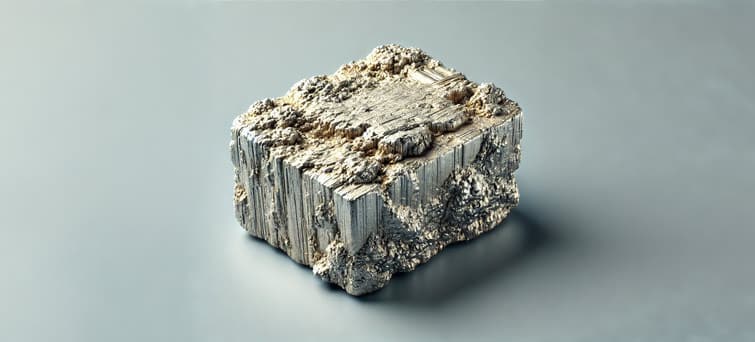Introduction
Praseodymium: A Vital Element for High-Tech and Engineering Solutions
Praseodymium is a rare earth metal known for its versatility and utility in advanced materials and technologies. This silvery, soft metal exhibits a unique greenish hue and is highly valued for its magnetic, electrical, and optical properties. Its presence enhances materials in fields such as aerospace, electronics, and renewable energy, providing strength and stability under extreme conditions. Praseodymium is essential in manufacturing powerful magnets, durable alloys, and specialized ceramics. With applications ranging from jet engines to glass coloring, Praseodymium stands as a critical element driving innovation in several high-tech industries.
History/Discovery
Tracing Praseodymium’s Discovery: A Tale of Separation and Science
Praseodymium was first isolated in 1885 by the Austrian chemist Carl Auer von Welsbach, who separated it from didymium—a mineral once thought to be a single element. Welsbach discovered that didymium was, in fact, a mixture of two elements, Praseodymium and Neodymium. The name Praseodymium derives from the Greek words prasios, meaning “green,” and didymos, meaning “twin,” referencing its green color in salts and its close association with Neodymium. Initially, Praseodymium found limited uses, but with advancements in material science, its unique properties became valuable across several industries, marking it as a vital material in high-performance applications today.
Characteristics
Unique Physical and Chemical Attributes of Praseodymium
Praseodymium is a soft, ductile, and malleable metal, known for its greenish-silver appearance, which it owes to its ability to form green compounds. While it is relatively reactive, Praseodymium is stable in mineral form, making it suitable for various industrial applications. One of its standout characteristics is its magnetic properties, which enhance the performance of permanent magnets used in modern technologies. Praseodymium also exhibits high corrosion resistance when alloyed, contributing to the strength and longevity of materials used in extreme environments. Additionally, its bright, vivid green compounds are highly sought after in the glass and ceramics industry for coloration.

Popular Applications
High-Performance Applications for Praseodymium Across Industries
Praseodymium’s properties make it ideal for enhancing the strength, heat resistance, and magnetic stability of materials. It is a critical component in the creation of high-strength alloys, especially those used in aircraft engines, as it improves the heat tolerance and durability of engine components. Praseodymium-doped glass is used in specialized optics, as it filters certain wavelengths of light, improving clarity and safety for wearers. Additionally, Praseodymium is a key ingredient in creating powerful magnets used in electric vehicles, wind turbines, and other applications that demand stable magnetic fields under high temperatures.
List of Popular Applications
- Aerospace Alloys: Praseodymium is alloyed with magnesium to create lightweight, durable materials that withstand high temperatures, ideal for jet engines.
- Magnets: Praseodymium is added to Neodymium magnets, enhancing their durability and allowing them to maintain magnetism at higher temperatures.
- Welding & Safety Glasses: Praseodymium-doped glass filters out yellow and green light, providing eye protection for welders and glassworkers.
- Ceramics & Glass Coloration: Praseodymium oxide adds a bright, stable yellow-green tint to ceramics and glass, commonly used in artistic and safety glass.
Where You Find Praseodymium in the World
Praseodymium Reserves and Extraction Locations
Praseodymium is typically found in rare earth mineral deposits alongside other rare earth elements, primarily in bastnäsite and monazite ores. China leads the world in Praseodymium production, controlling the majority of global reserves, with additional sources in Australia, Brazil, and the United States. The extraction of Praseodymium, like other rare earth metals, is labor-intensive and requires environmentally controlled processes to limit impact. The element’s growing demand in renewable energy and electronics has raised concerns about supply sustainability, prompting research into recycling Praseodymium from end-of-life products and the development of alternative sourcing strategies.
The Future of Praseodymium
Praseodymium’s Expanding Role in Green Energy and Technology
As the demand for renewable energy and efficient electronic devices grows, Praseodymium’s role in magnets, alloys, and optics is expected to expand. Praseodymium’s importance in electric vehicle motors and wind turbines underscores its value in green technology, making it a critical element in the global shift towards sustainability. Moreover, its utility in creating heat-resistant alloys positions it as essential in aerospace and high-performance engineering. With increasing environmental awareness, recycling and reusing Praseodymium will be necessary to ensure a stable supply while minimizing ecological impact, securing its place as a valuable resource for future innovations.

